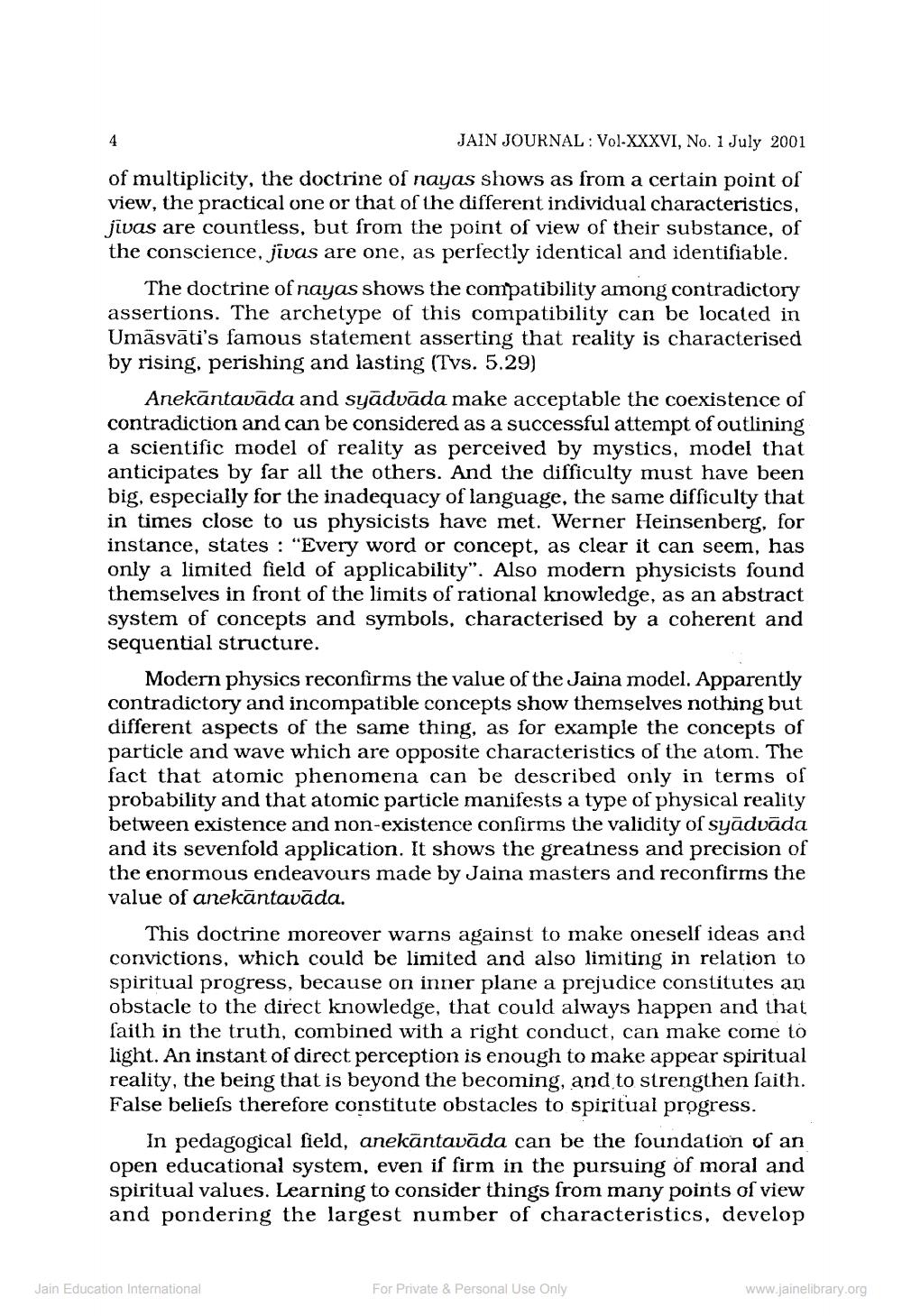Book Title: Jain Journal 2001 07 Author(s): Jain Bhawan Publication Publisher: Jain Bhawan Publication View full book textPage 9
________________ JAIN JOURNAL: Vol-XXXVI, No. 1 July 2001 of multiplicity, the doctrine of nayas shows as from a certain point of view, the practical one or that of the different individual characteristics, jīvas are countless, but from the point of view of their substance, of the conscience, jivas are one, as perfectly identical and identifiable. The doctrine of nayas shows the compatibility among contradictory assertions. The archetype of this compatibility can be located in Umāsvāti's famous statement asserting that reality is characterised by rising, perishing and lasting (Tvs. 5.29) Anekantavada and syadvāda make acceptable the coexistence of contradiction and can be considered as a successful attempt of outlining a scientific model of reality as perceived by mystics, model that anticipates by far all the others. And the difficulty must have been big, especially for the inadequacy of language, the same difficulty that in times close to us physicists have met. Werner Heinsenberg, for instance, states : "Every word or concept, as clear it can seem, has only a limited field of applicability". Also modern physicists found themselves in front of the limits of rational knowledge, as an abstract system of concepts and symbols, characterised by a coherent and sequential structure. Modern physics reconfirms the value of the Jaina model. Apparently contradictory and incompatible concepts show themselves nothing but different aspects of the same thing, as for example the concepts of particle and wave which are opposite characteristics of the atom. The fact that atomic phenomena can be described only in terms of probability and that atomic particle manifests a type of physical reality between existence and non-existence confirms the validity of syādvāda and its sevenfold application. It shows the greatness and precision of the enormous endeavours made by Jaina masters and reconfirms the value of anekantavāda. This doctrine moreover warns against to make oneself ideas and convictions, which could be limited and also limiting in relation to spiritual progress, because on inner plane a prejudice constitutes an obstacle to the direct knowledge, that could always happen and that faith in the truth, combined with a right conduct, can make come to light. An instant of direct perception is enough to make appear spiritual reality, the being that is beyond the becoming, and to strengthen saith. False beliefs therefore constitute obstacles to spiritual progress. In pedagogical field, anekantavāda can be the foundation of an open educational system, even if firm in the pursuing of moral and spiritual values. Learning to consider things from many points of view and pondering the largest number of characteristics, develop Jain Education International For Private & Personal Use Only www.jainelibrary.orgPage Navigation
1 ... 7 8 9 10 11 12 13 14 15 16 17 18 19 20 21 22 23 24 25 26 27 28 29 30 31 32 33 34 35 36 37 38 39 40 41 42 43 44 45 46 47 48 49 50 51 52 53 54 55 56 57 58 59 60 61 62 63 64 65 66 67 68 69 70 71 72 73 74
